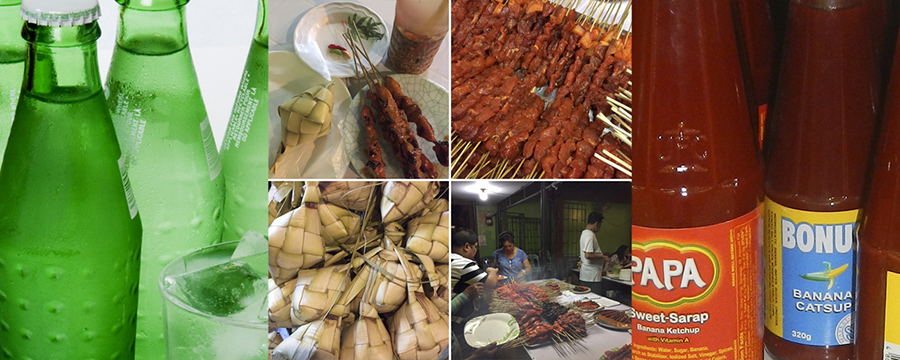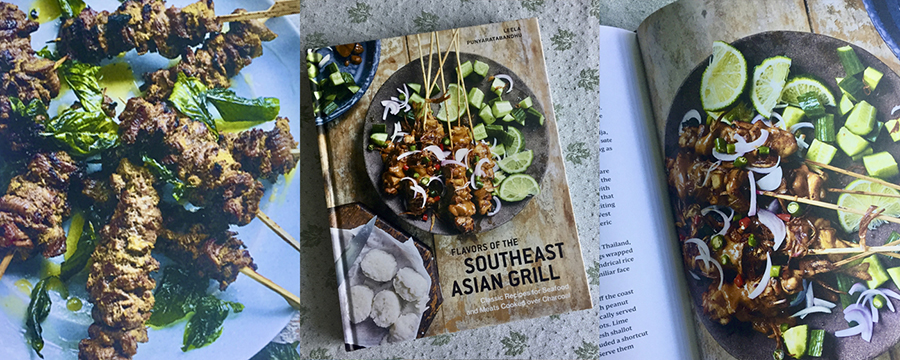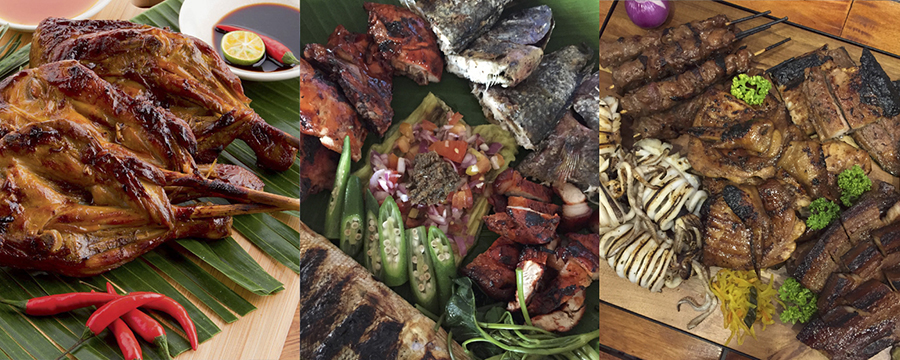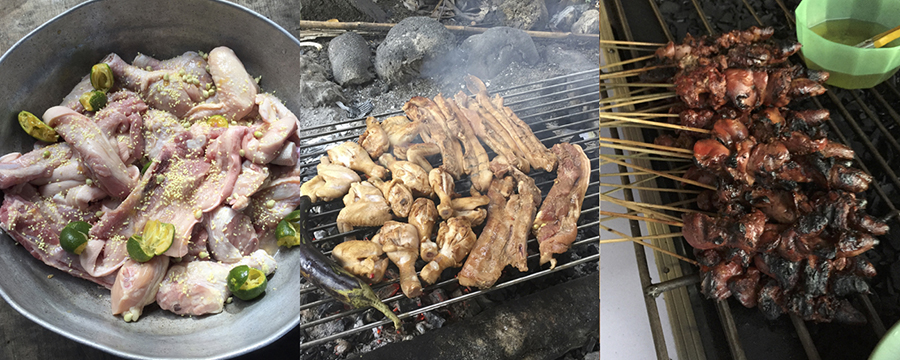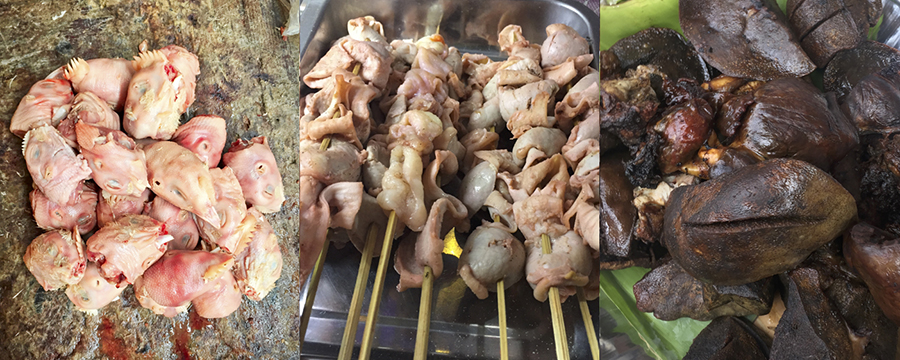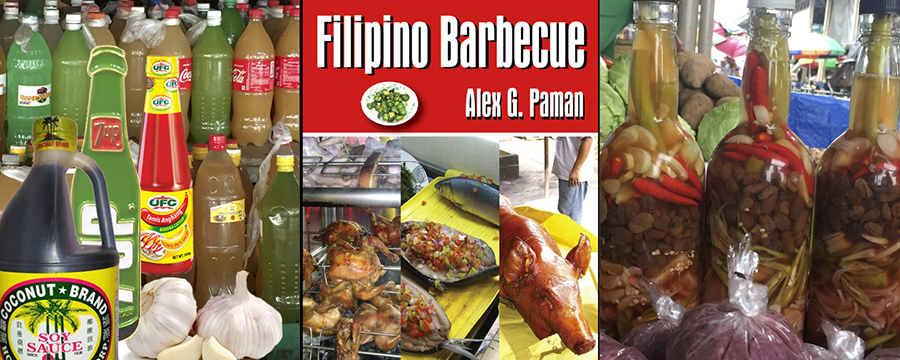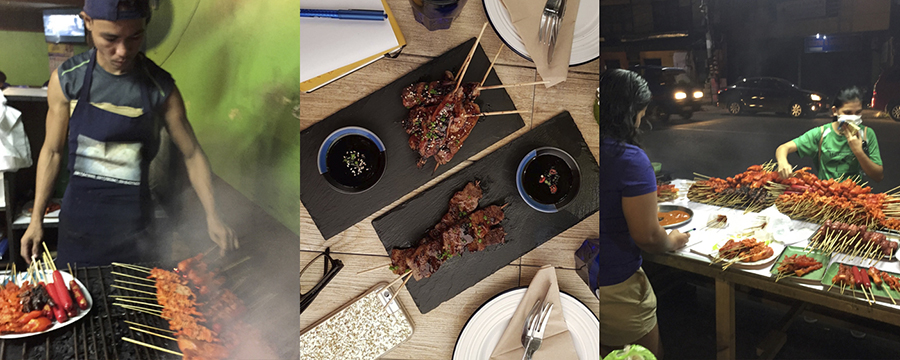The curious case of Pinoy pork BBQ and its love for banana ketchup and 7UP | ABS-CBN

Welcome, Kapamilya! We use cookies to improve your browsing experience. Continuing to use this site means you agree to our use of cookies. Tell me more!
The curious case of Pinoy pork BBQ and its love for banana ketchup and 7UP
The curious case of Pinoy pork BBQ and its love for banana ketchup and 7UP
ANCX
Published May 23, 2020 06:29 PM PHT
Banana ketchup and 7UP®, how did these unlikely products become the primary ingredients for a marinade in the Filipino barbecue? Is it an efficient way to introduce both a citrus flavor and sugar into the dish? What about the carbonation, how does that affect the food? Did banana ketchup come into existence mainly out of necessity, or do Filipinos still prefer it over tomato ketchup, which is now widely available? Whether out of habit or nostalgia, banana ketchup has for sure become a large part of the mainstream Filipino food culture.
Banana ketchup and 7UP®, how did these unlikely products become the primary ingredients for a marinade in the Filipino barbecue? Is it an efficient way to introduce both a citrus flavor and sugar into the dish? What about the carbonation, how does that affect the food? Did banana ketchup come into existence mainly out of necessity, or do Filipinos still prefer it over tomato ketchup, which is now widely available? Whether out of habit or nostalgia, banana ketchup has for sure become a large part of the mainstream Filipino food culture.
These were the questions I received via email last year from Leela Puntarayatabandhu, the author of Simple Thai Food and Bangkok cookbooks. She was inquiring about the Filipino-style pork barbecue she had experienced some years ago while attending a conference in UP Diliman.
These were the questions I received via email last year from Leela Puntarayatabandhu, the author of Simple Thai Food and Bangkok cookbooks. She was inquiring about the Filipino-style pork barbecue she had experienced some years ago while attending a conference in UP Diliman.
In culinary terms, the questions Leela posted were straightforward and easy to answer, but to avoid confusion, there were also things I deliberately omitted in my reply, including the cultural aspects of colonization and Americanization of our cuisine. I felt that this would have been counter-intuitive and would have initiated a more profound discussion.
In culinary terms, the questions Leela posted were straightforward and easy to answer, but to avoid confusion, there were also things I deliberately omitted in my reply, including the cultural aspects of colonization and Americanization of our cuisine. I felt that this would have been counter-intuitive and would have initiated a more profound discussion.
The Southeast Asian connection
The Southeast Asian connection
A year on from that email from Leela, I received a copy of her book, Flavors of the Southeast Asian Grill, Classic Recipes for Seafood and Meats Cooked over Charcoal from Penguin Random House. Aimed at international readers, and in particular Americans, it is beautifully written and photographed with recipes from Thailand, Burma, Laos, Cambodia, Vietnam, Malaysia, Singapore, Indonesia, and the Philippines.
A year on from that email from Leela, I received a copy of her book, Flavors of the Southeast Asian Grill, Classic Recipes for Seafood and Meats Cooked over Charcoal from Penguin Random House. Aimed at international readers, and in particular Americans, it is beautifully written and photographed with recipes from Thailand, Burma, Laos, Cambodia, Vietnam, Malaysia, Singapore, Indonesia, and the Philippines.
ADVERTISEMENT
I felt somewhat envious because the book is resplendent with colorful and sumptuous exotic recipes from various parts of Southeast Asia, with tamarind, turmeric, lemongrass, and cilantro as ingredients of choice, while lemon-lime soda and banana ketchup are described as the imperative ingredients in the only recipe coming from the Philippines.
I felt somewhat envious because the book is resplendent with colorful and sumptuous exotic recipes from various parts of Southeast Asia, with tamarind, turmeric, lemongrass, and cilantro as ingredients of choice, while lemon-lime soda and banana ketchup are described as the imperative ingredients in the only recipe coming from the Philippines.
Leafing through the book, I saw similar recipes that reminded me so much of our Tagalog inihaw, Ilocano sarabasab, Cebuano sinugba, Ilonggo inasal, Dumaguete inato, Kapampangan ningnáng, and Zamboanga satti. These are recipes that represent the primeval act of placing a piece of meat directly over a burning charcoal—the most elementary of all cooking techniques—a primordial instinct, closest to honoring our Austronesian roots and our connection to the food culture of Southeast Asia.
Leafing through the book, I saw similar recipes that reminded me so much of our Tagalog inihaw, Ilocano sarabasab, Cebuano sinugba, Ilonggo inasal, Dumaguete inato, Kapampangan ningnáng, and Zamboanga satti. These are recipes that represent the primeval act of placing a piece of meat directly over a burning charcoal—the most elementary of all cooking techniques—a primordial instinct, closest to honoring our Austronesian roots and our connection to the food culture of Southeast Asia.
But then again, to confuse our neighbors even further, we have our homegrown exotica, a culinary subculture of some sort, the honest-to-goodness street food that is prevalent in Metro Manila and other urban centers, for example, Adidas (chicken feet), Betamax (coagulated blood cubes), helmet (chicken heads), and Walkman (pig’s ears). This gives a new meaning to the phrase, “fortune favors only the brave.” One can only wonder why street food vendors decided to use brand names to describe these nibbles.
But then again, to confuse our neighbors even further, we have our homegrown exotica, a culinary subculture of some sort, the honest-to-goodness street food that is prevalent in Metro Manila and other urban centers, for example, Adidas (chicken feet), Betamax (coagulated blood cubes), helmet (chicken heads), and Walkman (pig’s ears). This gives a new meaning to the phrase, “fortune favors only the brave.” One can only wonder why street food vendors decided to use brand names to describe these nibbles.
Hybrid cuisine
Hybrid cuisine
Combining lemon-lime soda, banana ketchup, soy sauce, vinegar, calamansi, and garlic, as marinade and basting sauce for pork barbecue sold on the streets, gained popularity during the late 1950s. I would have thought the primary purpose of using 7UP was to mask the strong smell of meat that had been exposed to the elements, but street food vendors swear by the efficacy of carbonated water to tenderize cheap cuts of meat. In the marinating process, the sugar and citrus flavor creates a crunchy, caramelized film on the meat, especially around the fat, after it has been grilled.
Combining lemon-lime soda, banana ketchup, soy sauce, vinegar, calamansi, and garlic, as marinade and basting sauce for pork barbecue sold on the streets, gained popularity during the late 1950s. I would have thought the primary purpose of using 7UP was to mask the strong smell of meat that had been exposed to the elements, but street food vendors swear by the efficacy of carbonated water to tenderize cheap cuts of meat. In the marinating process, the sugar and citrus flavor creates a crunchy, caramelized film on the meat, especially around the fat, after it has been grilled.
In a more contemporary setting, Northern California-based Filipino-American journalist Alex G. Paman, the author of Filipino Barbecue, includes lemon-lime soda at the top of his barbecue pantry list. He writes, “7-Up or Sprite are traditionally added to marinades, not only for their flavor, but also as a meat tenderizer.” He adds, “Filipino soy sauce is a little more pungent and salty than its neighboring counterparts. Along with soy sauce, vinegar is a base ingredient used in traditional marinades. Filipino barbecue generally uses cane vinegar, although distilled white vinegar is a good substitute. Lastly, banana ketchup, a sweet condiment used primarily as a dipping sauce, is also used for basting barbecue pork, sausages and other grilled dishes.”
In a more contemporary setting, Northern California-based Filipino-American journalist Alex G. Paman, the author of Filipino Barbecue, includes lemon-lime soda at the top of his barbecue pantry list. He writes, “7-Up or Sprite are traditionally added to marinades, not only for their flavor, but also as a meat tenderizer.” He adds, “Filipino soy sauce is a little more pungent and salty than its neighboring counterparts. Along with soy sauce, vinegar is a base ingredient used in traditional marinades. Filipino barbecue generally uses cane vinegar, although distilled white vinegar is a good substitute. Lastly, banana ketchup, a sweet condiment used primarily as a dipping sauce, is also used for basting barbecue pork, sausages and other grilled dishes.”
ADVERTISEMENT
You may also like:
You may also like:
There’s something mysterious about lemon-lime soda and banana ketchup in the Filipino barbecue that needs to be deconstructed. More than their actual culinary function, they represent a postcolonial pastiche that validates the peculiarity of our cuisine. Pork barbecue defines the Filipino taste buds with a preference for the sensational combination of umami, saltiness, and sweetness—the linamnam factor.
There’s something mysterious about lemon-lime soda and banana ketchup in the Filipino barbecue that needs to be deconstructed. More than their actual culinary function, they represent a postcolonial pastiche that validates the peculiarity of our cuisine. Pork barbecue defines the Filipino taste buds with a preference for the sensational combination of umami, saltiness, and sweetness—the linamnam factor.
The Philippines has suffered a long, volatile history of colonization and imperialism. We resisted the Americans, yet we’ve incorporated and enjoy their products in our everyday cuisine. Even when the Americans finally gave us independence in 1946, in essence, they never really left. We can’t deny the “Americanization” of our food system because their presence is still felt in every aspect of our lives. While to some this represents progress, others might view it as a gastronomic abomination.
The Philippines has suffered a long, volatile history of colonization and imperialism. We resisted the Americans, yet we’ve incorporated and enjoy their products in our everyday cuisine. Even when the Americans finally gave us independence in 1946, in essence, they never really left. We can’t deny the “Americanization” of our food system because their presence is still felt in every aspect of our lives. While to some this represents progress, others might view it as a gastronomic abomination.
Now that lemon-lime soda and banana ketchup are manufactured locally, somehow, their American provenance still adds some cultural weight to whatever it is used on. The resulting hybridity blended with the strong DNA embedded in our grilled pork barbecue is as tisoy as Christopher de Leon, well, as in the movie Tisoy. This is how Nonoy Marcelo ordained his main character to be, and it turned out to be a classic and delicious as ever.
Now that lemon-lime soda and banana ketchup are manufactured locally, somehow, their American provenance still adds some cultural weight to whatever it is used on. The resulting hybridity blended with the strong DNA embedded in our grilled pork barbecue is as tisoy as Christopher de Leon, well, as in the movie Tisoy. This is how Nonoy Marcelo ordained his main character to be, and it turned out to be a classic and delicious as ever.
Photos by Ige Ramos
ADVERTISEMENT
ADVERTISEMENT


